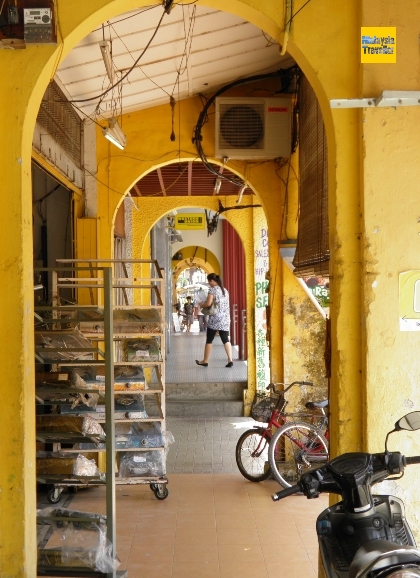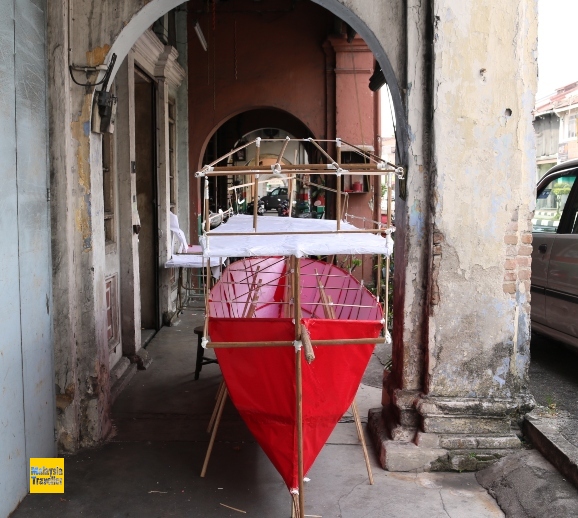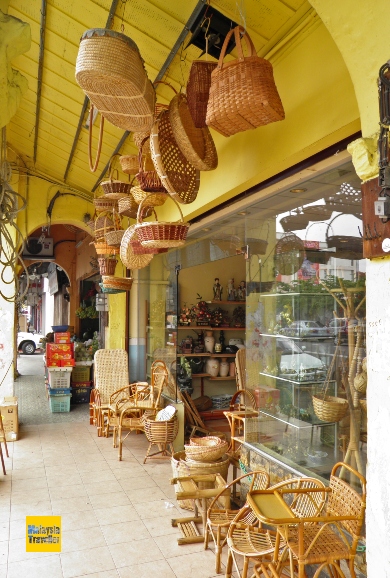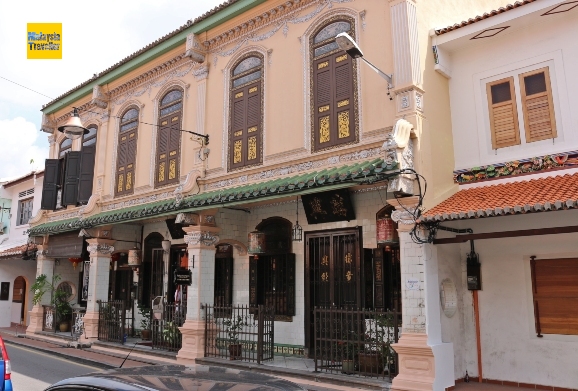- Home
- Malaysia Trivia
- Kaki Lima
Kaki Lima

In an early example of town planning, British colonial administrators in Malaya insisted that rows of shophouses be built with the ground floor recessed by five feet, thus forming a pavement covered by the overhanging floor above. This arrangement, known as the Five Foot Way or Kaki Lima, enabled pedestrians to walk around during torrential downpours or on hot sunny days without getting wet or sunburnt. Kaki lima can be found all over the country but they are often blocked by fences, parked motorbikes, goods and other clutter. Keeping them clear of obstructions has always been a constant struggle for town council enforcers.
 A typical example of kaka lima in Malaysia. This one in Bentong is partially blocked by a motorbike and shop display shelves. The height of the pavement changes at each shophouse meaning that pedestrians have to take care of steps as they walk.
A typical example of kaka lima in Malaysia. This one in Bentong is partially blocked by a motorbike and shop display shelves. The height of the pavement changes at each shophouse meaning that pedestrians have to take care of steps as they walk.Stamford Raffles is usually credited with introducing the Five Foot Way into the Malaya Peninsula. While reviewing the 1822 'Plan of the Town of Singapore', Raffles recommended that houses be built with masonry and roof tiles to reduce fire risk and that they should have uniform and regular facades with a continuous sheltered public walkway at the front. This proposal produced the distinctive five foot ways of the local architecture of Singapore and Malaysia where by-laws were enacted requiring such walkways.
 All sorts of items block the Five Foot Ways. Here in Kampar, an elaborate paper boat is being prepared as an offering for the Hungry Ghosts Festival.
All sorts of items block the Five Foot Ways. Here in Kampar, an elaborate paper boat is being prepared as an offering for the Hungry Ghosts Festival. This shop in Seremban makes good use of the kaki lima to display its products.
This shop in Seremban makes good use of the kaki lima to display its products.Raffles probably encountered the kaki lima in Java where the Dutch had introduced town planning practices in the construction of Batavia (Jakarta). But it is likely that kaki lima were around in Malaysia before Raffles. The earliest examples of kaka lima in Malaysia are probably those in Melaka's Heeren Street (Jalan Tun Tan Cheng Lock) where many of the buildings predate the establishment of Singapore. Many of the kaki lima on this street are walled off and some are even fenced in so that the pavement forms part of the town house rather than a public space. Pedestrians therefore have to walk along the road since the sidewalk is blocked.
 This beautiful building in Melaka's Jalan Tun Tan Cheng Lock has a fenced-off kaka lima meaning no passing through for pedestrians.
This beautiful building in Melaka's Jalan Tun Tan Cheng Lock has a fenced-off kaka lima meaning no passing through for pedestrians.- Home
- Malaysia Trivia
- Kaki Lima
Share this page:




Comments
Have your say about what you just read! Leave me a comment in the box below.